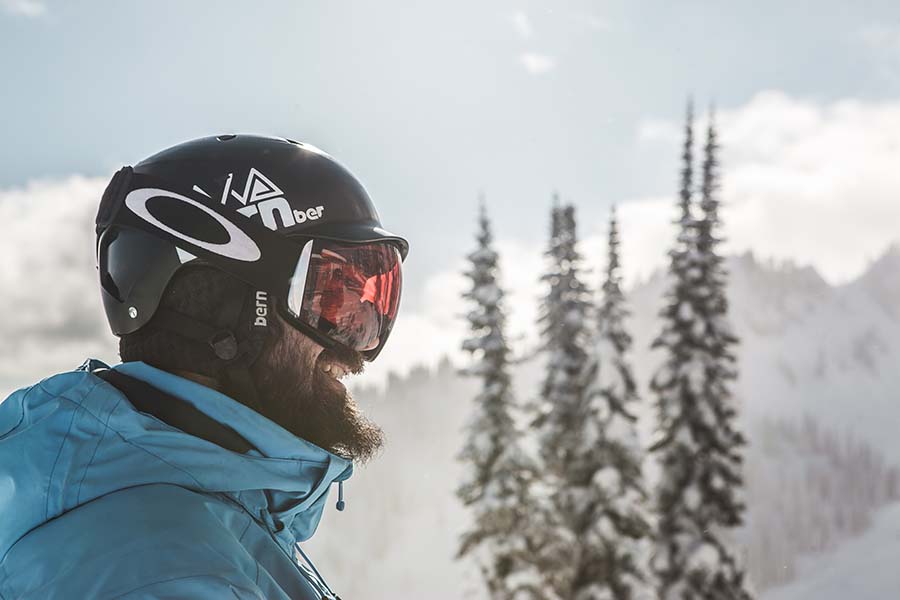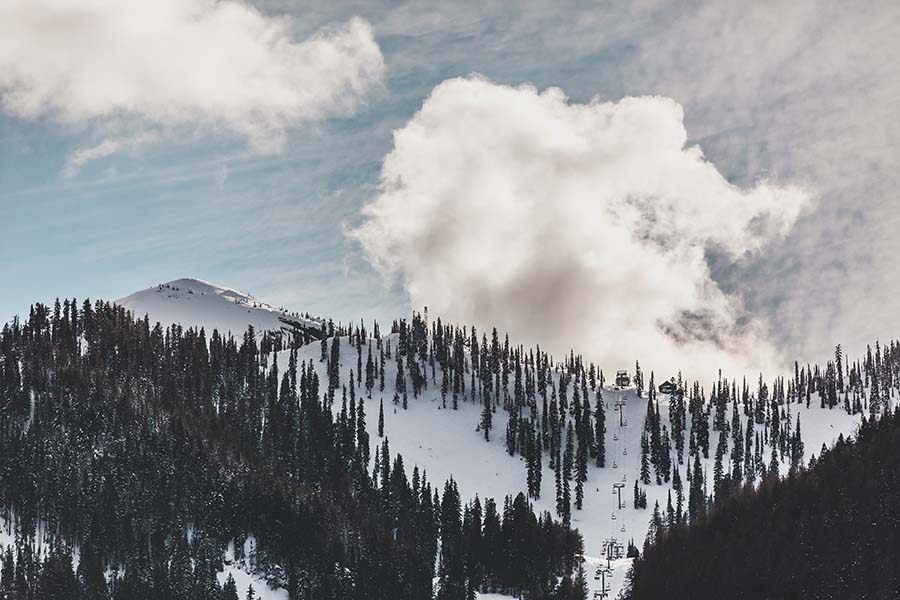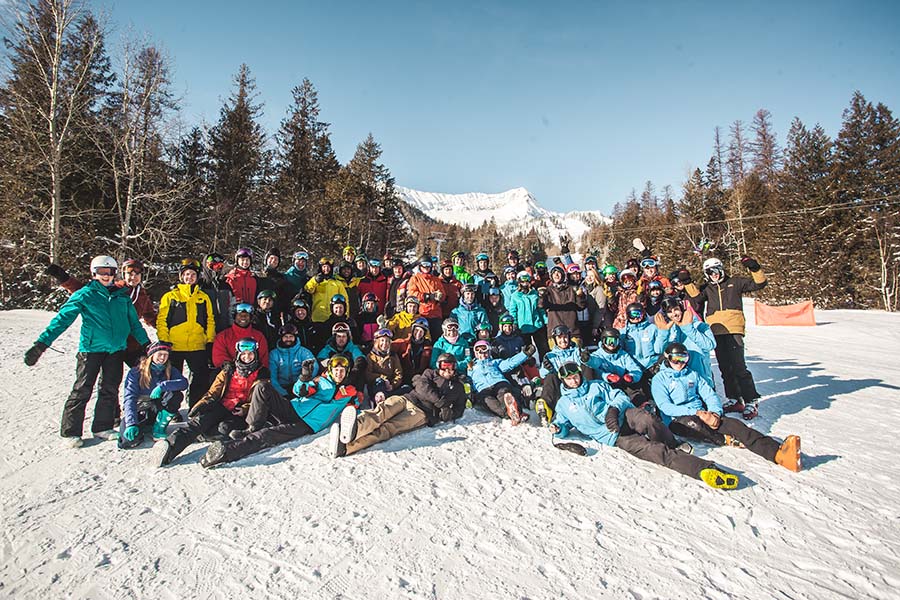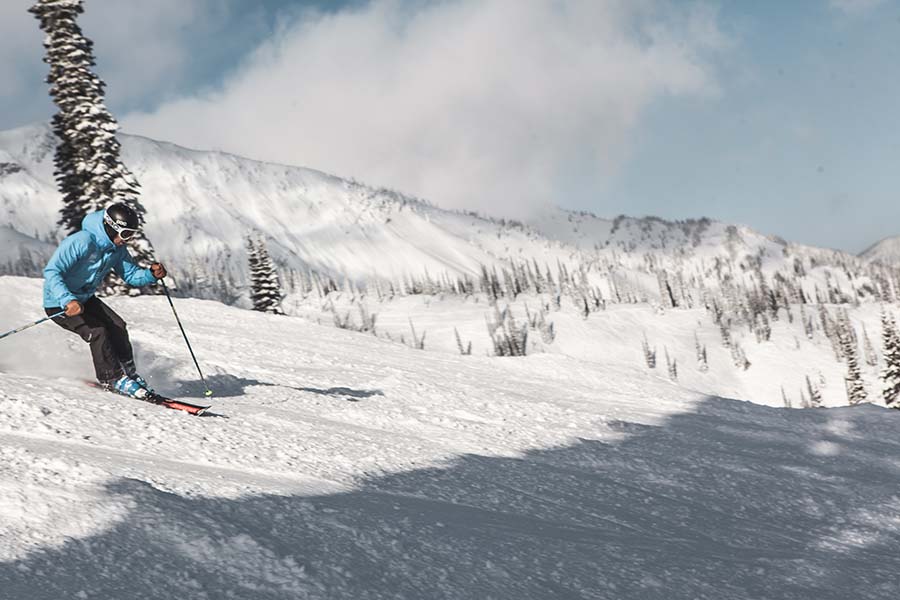- About
- Courses
-
Destinations
EuropeNew Zealand
- Journal
- Contact
If you’ve a passion for the mountains, then becoming a ski or snowboard instructor could be your calling. From endless shred time to travelling the globe, the lifestyle is matched by the career opportunity.
Whether you’re daydreaming about back-to-back winters or ready to commit to your obsession, this step by step guide will take you through the process of becoming a global ski or snowboard instructor.
Step one - is the lifestyle right for you?
Becoming a ski or snowboard instructor is an amazing career, and it all starts with a noble dream to pursue your obsession. Getting to the top takes commitment and hard work, but the lifestyle that awaits it out of this world. Think global travel, mountain dwelling, huge job satisfaction and after-work après.
Before embarking on this path, you need a passion for your sport and willingness to learn, with the potential to mould into a pro. The most viable route into the industry is through an instructor training course, and although you don't need to be an expert skier or snowboarder to start out, it's helpful to have some experience under your belt.
Whether the job is suited to you totally depends on your outlook. Choosing to be an instructor is a lifestyle choice with huge perks, and legitimate career prospects too. Like any career, you must start at the bottom and work your way up. As a newbie instructor, you may not be top of the pecking order when lessons are being assigned and you’ll spend a lot of time teaching beginners and children. While this might not be your ultimate goal, it’s extremely rewarding to help people get their first turns on lock.
As you gain experience and progress through the instructor levels, more opportunities will present themselves. You’ll become more in demand, able to teach higher-level lessons and earn more money. If you’re in it for the long run, you may even end up training future instructors, running a snow school or moving into another area of snowsports. Resolute that this is the right path for you, it’s time to make it happen.

Step two – set your end goal
You don’t need your career mapped out, but having an objective in sight will help guide your journey. Here we’re mainly talking about where you aspire to teach in the future. Some of your decisions, such as which instructor system to train with, may be influenced by where you want to work. For example, if your aim is to work in France, you need to ensure you train with a system that is recognised there.
On the flip side, you may be more fluid when it comes to location. Your goal might simply be to qualify and see where it takes you. In this case, you need to choose a qualification that won’t limit your opportunities. The world is truly your oyster and with a qualification from a respected instructor system, you’ll be able to work throughout the globe, in places such as Canada, USA, Europe, Japan, Australia and New Zealand.
Step three – choose your qualification system
The next step is to decide what qualifications you need. All qualifications are issued by a national governing body and overseen by the ISIA (International Ski Instructors Association). The most popular systems are:
While there are subtle differences between them, most ISIA qualification systems are relatively similar, consisting of three or four certification levels, and all offer international employment prospects. Each system will carry more clout in its own country, and each level of certification will open more doors.
The system that is best for you will depend on your goals. Our best advice is to focus on where you want to work in the long run and do their qualification. If you’re not sure, then focus on where you want to train and do that country’s qualification. CSIA/CASI is generally better recognised in North America, while BASI is generally a better option for Europe.

Step four – choose your instructor course
To begin your journey and achieve the necessary qualifications, you need to choose a ski or snowboard instructor course. These courses are a great route into the industry and reputable training programs will fully prepare you for a career as an instructor. You’ll be trained on all the different criteria you need to pass the qualification exams, be set up with hands on teaching experience, receive career advice on becoming an instructor, and make valuable connections in the industry.
Courses are run by independent companies, like Nonstop, and range from a few weeks to the whole season. The following types of programs are available:
Doing a ski instructor course is a big investment in your future and with so many options out there, it pays to do your research to find the best fit for you. It often boils down to the training company’s reputation, the qualifications available, which resort you want to base yourself in, the quality of coaching, as well as the support and other experiences on offer. Price may also be a factor, although as this is a long-term investment in your career, it’s sensible to dig deeper and assess value for money.
Step five – do your course and qualify
Once you’re in the mountains, the hard work and fun commences. The main objective here is to secure your qualifications, so you’ll need to focus during your training as you develop your technique and learn how to teach others. It’s not all work and no play though; they'll be plenty of time for free shred, mountain escapades and gnarly après.
You should come out of your course as a qualified instructor with world-recognised qualifications to boot. To make yourself more employable, you may have the opportunity to gain additional specialised certifications, such as in freestyle, racing or avalanche safety. You should also take advantage of any opportunity you can to get hands on instructing experience by shadowing real lessons.

Step six - apply for your first job
After landing your instructor qualifications, it’s time to apply for your rookie instructor job. If you’ve trained through Nonstop, you’ll have received plenty of advice and insider tips on securing work during our careers workshops. We also have a large network of ski school connections you can utilise. Your trainers will be a great source of advice and a recommendation from a senior pro can go a long way to helping you land a job.
Be proactive in looking for opportunities and apply early. It’s always good to put yourself on the radar of ski school decision-makers and make your intentions clear. Try to introduce yourself to the local ski school director at your training resort if you have ambitions of working there. Before applying, consider your working eligibility, what visas you need, and whether you need to speak any languages.
Step seven – live the dream
You've made it. Time to start following your passion and enjoying the fruits of your labour. Living in the mountains, being paid to ski or ride and meeting a ton of amazing people.

Step eight – continue your progression
If you want a long-term career as an instructor, it’s important to continue your professional development. This means gaining experience by putting in the seasons, and training for higher levels of certification.
People usually spend 2-3 seasons as a level 2 instructor before challenging for their level 3. As a level 3 you may be able to attain an ISIA stamp, which will improve your global employability further. Beyond that, level 4 is the next step and can take many years of dedicated training.
What next?
Armed with new knowledge, get in touch with our team and talk to us about your plans. The next step to kick off the journey is to choose your ski instructor course / snowboard instructor course.
We look forward to speaking with you.